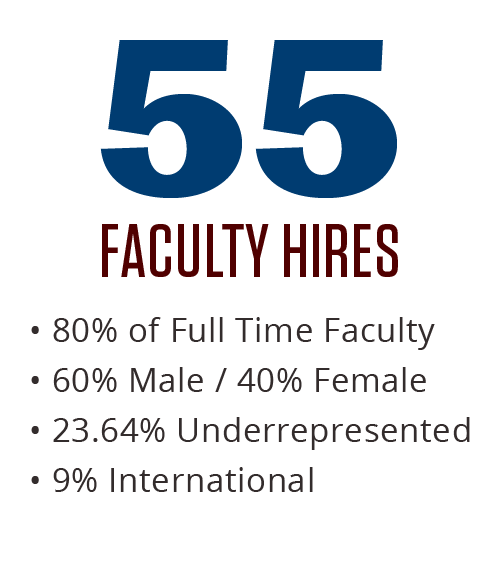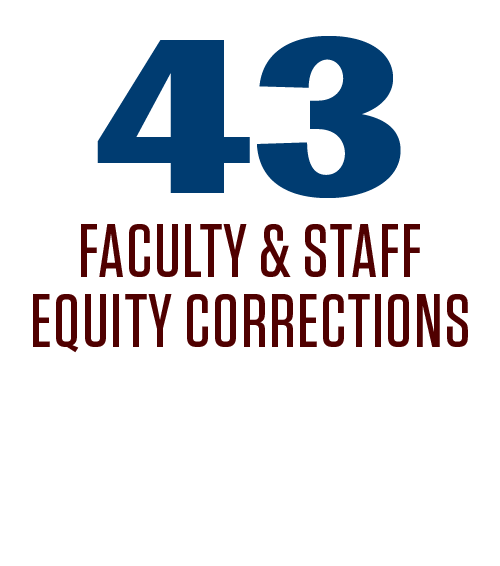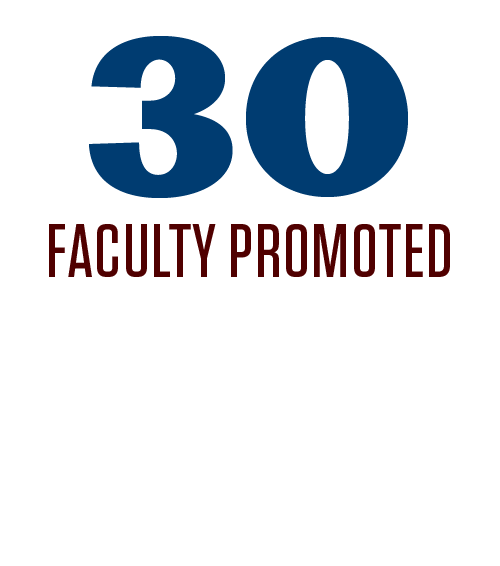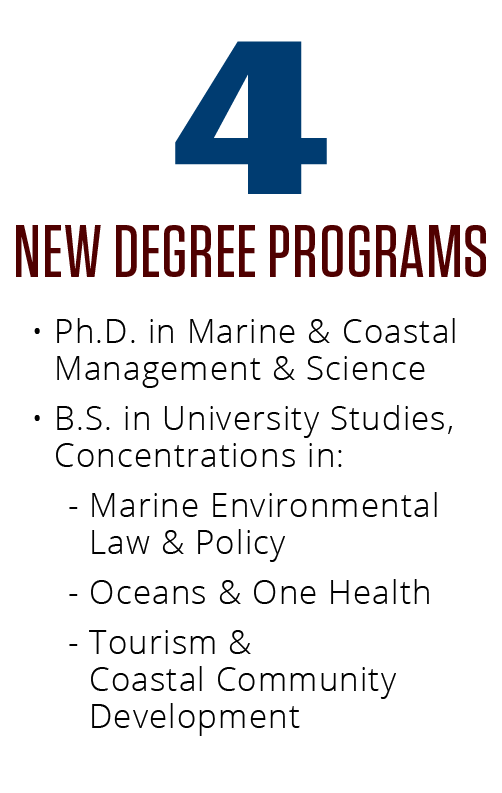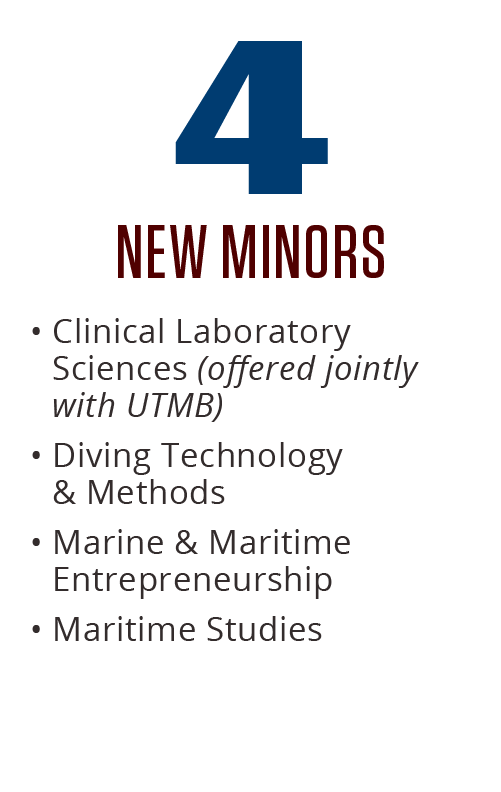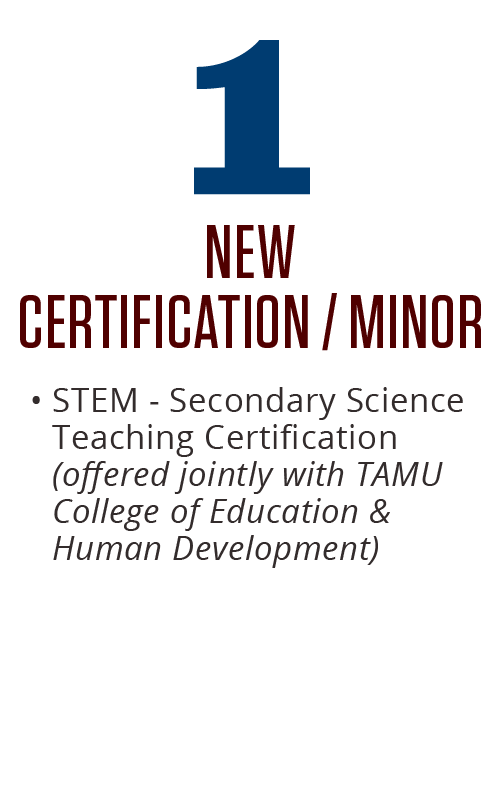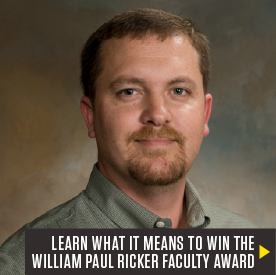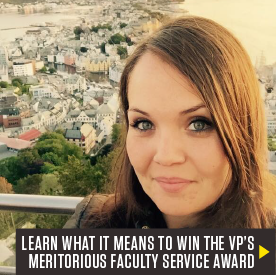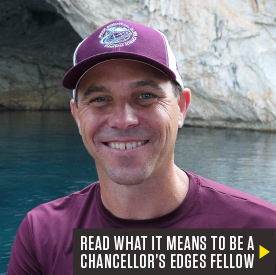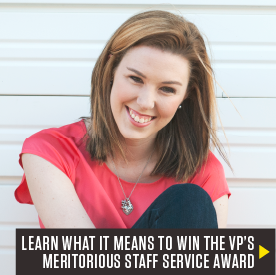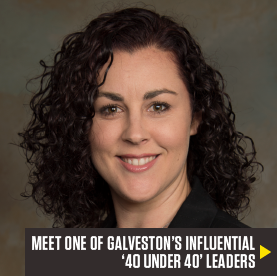Dr. Kathryn Falvo is an Instructional Assistant Professor of History in the Liberal Studies department at Texas A&M University at Galveston. She comes out of a dual-degree Ph.D. program at Penn State University, focusing both on history and on gender studies. Her research is in the history of food, foodways, and dietary movements. Throughout her time at Texas A&M-Galveston, she has enjoyed teaching U.S. History surveys and upper-level independent studies in gender history. As a member of Civic Literacy, Inclusion, Diversity & Equity Committee (CLIDE) and an advocate of Texas A&M-Galveston’s LGBTQIA+ population, Falvo is also an active proponent of diversity initiatives across campus.

Adieu to 2020

Dr. Patrick Louchouarn
Regents Professor, Dept. of Marine & Coastal Environmental Science & Dept. of Oceanography
Associate Provost (TAMU)
Executive Associate Vice President for Academic Affairs & Chief Academic Officer (TAMUG)
Dear Friends and Colleagues,
The end of any year always offers opportunities for reflecting on the achievements of the past 12 months and setting a vision for the ones to come. I am sure you join me in experiencing the awe and trepidation this year’s reflections bring. A year like no other in generations has left us exhausted yet unified and determined to build a more resilient tomorrow than we ever felt possible. Not only did our entire campus community have to navigate the disruptions of a global pandemic that wreaked havoc on our livelihoods, we had to adjust repeatedly to the interruptions multiple hurricanes brought to our shores. Our faculty and staff have embodied the Aggie Core Values of excellence, respect, integrity, loyalty, leadership and selfless service through the Herculean efforts they displayed to ensure academic continuity and provide the best pedagogical experience possible to our students. I find myself personally inspired and deeply grateful for their commitment and dedication, hence, I want to highlight and champion their continued creativity and achievements.
To recognize our faculty and also emphasize the connectivity of their work with themes central to the Blue Economy, we bring you a selection of short stories that illustrate the different perspectives they each share with respect to a simple daily experience, namely the enjoyment of a hot cup of coffee. These stories are meant to serve as an introduction to the creativity and richness of the scholarship performed on our campus. I invite you to explore in more detail the incredible stories and academic achievements of our faculty.
In addition to recognizing the awarded faculty and staff from Academic Affairs, please join me to applaud the extraordinary efforts all, without exception, gave to this institution to get us through this very difficult year. We would have been lost without their dedication and support.
In closing, and in addition to recognizing the community of scholars that define the Galveston Campus, I want to give a special shout out to the larger island family that has embraced us for more than five decades now. We feel it’s important to invest in the dynamic community that continues to reinvent itself and takes risks to thrive, so this small token recognizes and respects that fact. All over the world, maritime communities are addressing a mix of complex histories and connections to pasts that blend salt water, legitimate and questionable trades, and the people that have forever been attracted by the mysteries of the wide ocean and the opportunities it offered every civilization. Galveston is sister to these city-ports that define their regions and nautical basins. As Galveston reimagines itself with the ebb and flow of new generations, our land-, space-, and sea-grant institution contributes its energy and innovation to helping weave the fabric of our coastal state and nation.
Wishing you all a healthy 2021!
Webpage Navigation

History of Coffee
THE HISTORY OF COFFEE
Coffee was central to the early Atlantic “triangular trade.” Brought from Europe to America by Christopher Columbus in 1492, coffee quickly took both literal and economic root in the Americas. It was reintroduced to Europe with the other lucrative crop grown in the Americas - sugar. And with this critical additive, the global addiction to coffee was complete. When British colonizers came to the Americas, they imported both coffee and Britain’s cultural attachment to it. America was central to the triangular trade, as goods (and people) shifted between Africa, South America, North America, and Europe. Coffee was in the middle of all of these processes. While a small coffeehouse in Boston may seem quaint, it was in fact a microcosm of international affairs. Coffee consumers in America relied on Dutch shipping, African labor, Brazilian coffee, and Barbadian sugar. Thus, coffee was central to the history of expansion and domination in the early colonial world.
But it was also central to revolution. When Britain sought control over international trade, Americans responded by famously tossing millions of pounds worth of tea into the Boston Harbor. To get their caffeine fix, many patriots turned to the other, less popular caffeinated beverage – coffee. Shipped directly from South America without going through British ports or tax collectors, coffee was considered the true drink of revolutionaries. While many Americans struggled to get rid of their taste for tea entirely, coffee came to symbolize the promise of a global trade network controlled by Americans, not Britons.
So for your morning cup, I leave you this thought: Coffee is the brew of both the conquerors and the revolutionaries. Its sweetness is built on the bitter oppression of enslaved humans. But it has, ironically, filled the cups of revolutionaries that touted “freedom” and resisted oppression. Will your cup fuel dominance, and the expansion of your will? Or will you use it to rebel against tyrants, to think differently, to make change in your world? History shows, I suppose, that it can go either way.
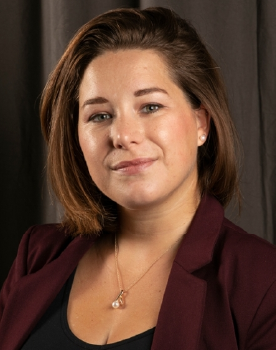
Kathryn Falvo
Instructional Assistant Professor
Liberal Studies
Light vs. Dark Roast: Just a Matter of Preference
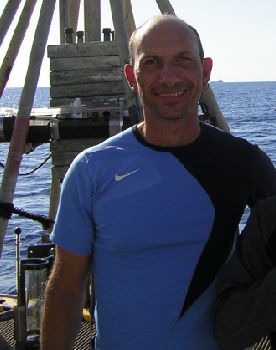
Patrick Louchouarn
Regents Professor
Dept. of Marine & Coastal Environmental Science & Dept. of Oceanography
Associate Provost (TAMU)
Executive Associate Vice President for Academic Affairs & Chief Academic Officer (TAMUG)
Solvent extraction of the ground light vs dark roasts showed no statistical difference in caffeine content in the coffee itself. However, extraction of the brewed coffee (drip) showed that the light roast yielded ~21% more caffeine per cup than the dark roast, thus confirming that differences in caffeine between the two roasts is not an urban myth. However, how can they yield different amounts of caffeine when they contained the same concentration in the ground roasted beans? The answer lies in an area of my research showing that charred organic matter has a strong binding affinity for aromatic organic compounds (what is also called a strong sorbent). We know caffeine is soluble (as your body thanks you every morning), but its structure also makes it susceptible to retention in strong sorbents, thus explaining the lower yields of caffeine from more charred coffee roasts.
This simple work also opens a door to understand the function of activated carbon in water filters. Less well known is the role of wildfires on water quality. Although charred organic matter acts as a sorbent, it is also composed of a number of toxic chemicals (e.g. polycyclic aromatic hydrocarbons), and their large-scale release in the aquatic environment following massive wildfires that are contributing to spikes of organic matter, not all benign, to the environment. Something to mull over your morning joe…
Anna Armitage
Professor
Marine Biology
The Association of Former Students Distinguished Achievement College-Level Teaching Award (2020)
Cassia Bömer Galvão
Assistant Professor
Maritime Business Administration
Montague-Center for Teaching Excellence Scholar (2020)
Wesley Highfield
Associate Professor with Tenure
Marine & Coastal Environmental Science
William Paul Ricker Faculty Award (2020)
Kristin Josvoll
Instructional Assistant Professor
Liberal Studies
Vice President Meritorious Service Award for Outstanding Classroom Teaching (2020)
David Wells
Associate Professor
Marine Biology
Chancellor’s Enhancing the Design of Gateway Experiences Fellow (2020)
Coffee & Sleep in the Deep Sea
COFFEE & SLEEP IN THE DEEP SEA
Coffee has a stimulating effect on the brain that reduces fatigue and prevents drowsiness. The active ingredient is caffeine, which occurs in a variety of seeds, nuts or leaves from plants native to Asia, Africa and South America. Most coffee beans come from Coffea arabica, a shrub originally from Ethiopia.
Caffeine is a psychoactive drug that is legal in most parts of the world, but not acceptable among some religious groups. Many people drink coffee to enhance wakefulness and concentration, even when they feel the need for sleep. Wakefulness and sleep are mutually exclusive mental states. Although the function of sleep remains poorly understood, it is an essential biological process that occurs in reptiles, birds and mammals and may have evolved with the emergence of terrestrial vertebrates 320 million years ago. However, behavior similar to sleep even occur in cnidaria (e.g., jellyfish), which are the most ancient animals to possess a nervous system.
Whatever its function, sleep has profoundly widespread effects on physiology and behavior. Behavioral sleep in terrestrial mammals is usually associated with closed eyes and varying degrees of body relaxation, immobility and a reduced level of vigilance, but a return to wakefulness with sufficient stimuli. Although coffee can postpone sleep, it cannot alleviate the physiological need for it. Some mammals can postpone or reduce sleep for months. Each year, southern elephant seals make a two-month migration in the southern Atlantic Ocean and exhibit sleep-like behavior only seven percent of the time, equivalent to four days of sleep out of 60. When they do sleep at sea, they dive to 100-meters and then slowly drift down to a depth of 350-meters for seven minutes, otherwise motionless and sleeping in the chilly darkness of the deep sea before returning to the surface to breathe. When elephant seals finally return to shore after their migration, they sleep for weeks, but it is uncertain whether they make up the lost sleep at sea.
Perhaps the best adaptation for sleeping at sea occurs in dolphins, which exhibit unihemispheric sleep. Only one hemisphere of their brain sleeps at a time, while the other hemisphere appears fully awake and functional. This allows them to swim and sleep at the same time with one eye closed and the other open. So, if you had the brain of a dolphin, you would never be fully asleep and would never need coffee for your early morning or late-evening tasks. Of course, you could still drink espresso for pleasure, something dolphins will never be able to experience.
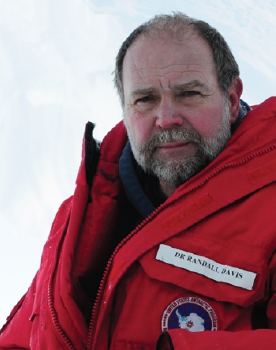
Randall Davis
Regents Professor
Marine Biology

Chaouki Boulahouache
Instructional Associate Professor
Foundational Sciences
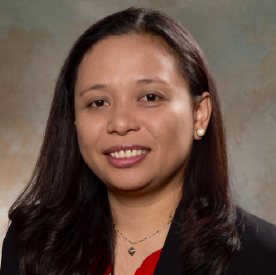
Jhenny Galan
Instructional Associate Professor
Foundational Sciences

Maria Pia Miglietta
Associate Professor with Tenure
Marine Biology
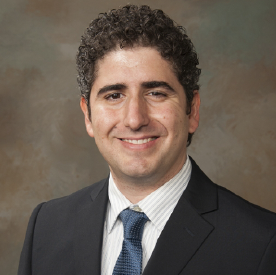
Nikolaos Mykoniatis
Instructional Associate Professor
Maritime Business Administration
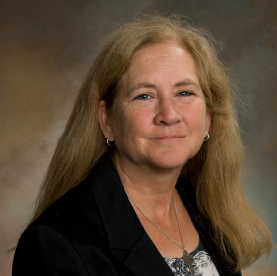
Grace Townsend
Instructional Associate Professor
Foundational Sciences
Maritime Logistics: It's All About the Coffee!
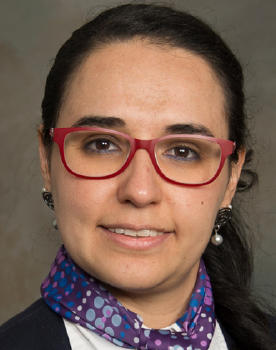
Cassia Bömer Galvão
Assistant Professor
Maritime Business Administration
MARITIME LOGISTICS:
IT'S ALL ABOUT THE COFFEE!
Americans consume 400 million cups of coffee per day, making the United States the leading consumer of coffee in the world. However, Hawaii is the only U.S. state that grows coffee and clearly cannot supply the increasing demand from American coffee lovers. In 2019/2020, the top U.S. suppliers were Brazil (24%), Colombia (22%), Vietnam (16%), and Honduras (6%).
In tonnage, Brazil is the largest coffee-producing country in the world. But Germany, without having a single plant of coffee on its territory, is listed as the largest coffee exporter, due to its traditional coffee-roasting industry. In value (USD), Brazilian exports correspond to 15% of world coffee trade, followed by Colombia with 8.9%. The coffee plant Coffea arabica is a large, delicate bush that grows at elevations between 600 -2,000 meters above sea level and thrives only between the Tropics of Cancer and Capricorn. That means that a whole lot of logistics is involved before that fresh, delicious cup of coffee can reach the American consumers every day.
Coffee beans are typically exported in sacks weighing 60 kilos (approximately 132 lbs). One 60-kilo sack of beans usually results in 48 kilos of roasted coffee, which is equivalent to about 4800 cups of coffee. Doing the math means that to supply the daily American need for coffee, 83,000 sacks of coffee are needed. And guess what? All of that needs to be transported by ocean freight, given the weight and dimensions of the logistics. Because a 20-feet-long container vessel can take up to 320 sacks, approximately 19 tons, in any given year, close to 100,000 coffee containers reach our shores at one of our ports in the continental U.S.
The Real "Fuel" of Maritime
THE REAL "FUEL" OF MARITIME
Mariners tend to burn the candle at both ends, often working a 24/7 week. Coffee is our fuel! Oftentimes you can even see the daily grind in the coffee grounds. As the leader of the Texas A&M University at Galveston Maritime Transportation Department (MART), I have been busy developing a new leg of our voyage. MART is engaging with maritime industry, federal and international regulatory bodies, and developing educational opportunities. Some days it’s smooth, and some days you just lose the filter.
Recently, I have been reaching for a “cuppa joe” to perk me up for interactions with United States Coast Guard Maritime Deck License program development and participating in International Maritime Organization, Merchant Marine Personnel Advisory Committee, and Maritime Academy Advisory Committee meetings. Additionally, I’m also involved with the Maritime Certificate Programs as we work to build a lifetime of learning for mariners.
Drink some coffee, it makes the maritime industry go!
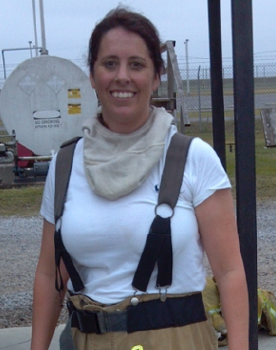
Augusta Roth
Department Head & Professor of the Practice
Maritime Transportation
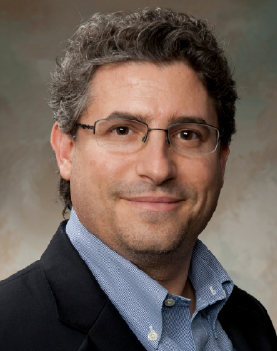
Samuel Brody
Director
Center for Texas Beaches & Shores
Regents Professor
Marine & Coastal Environmental Science
Presidential Impact Fellow
The occurrence of regular billion-dollar disaster events have placed Texas at the center of a national debate on the need to more effectively reduce risk and foster the development of healthier and more disaster-resilient communities. There is a tremendous opportunity for the state, and the Texas A&M University System (TAMUS) in particular, to become the leader in research, innovation, training, and policy for how to successfully live in a disaster-prone landscape. This opportunity became more solidified after the 86th Texas State Legislature enacted the Institute for a Disaster Resilient Texas (H.B. 2345) as a component of the Texas A&M System, led by our Center for Texas Beaches and Shores center director Dr. Samuel Brody. The formation of this entity fills a critical need for an A&M System-led collaborative initiative that collects, stores and disseminates data, develops analytical tools, and promotes the use of web-based technologies to inform decision makers, residents, and other interested parties on reducing the adverse impacts of disasters.
One of the main objectives for the Institute will be to develop a Texas Disaster Information System that collects, stores, analyzes, and predicts disaster impacts to inform stakeholders at multiple scales. This system would create a multi-level, multi-sourced repository for disaster-related data that can be utilized to address queries from state agencies, regional entities, local governments, and individual residents. The Institute will provide a virtual and physical hub for data analytics and applied research that will engage and benefit local communities across Texas. This entity will act as a living laboratory that brings together and leverages the research activities and partnerships already taking place across multiple campuses within the TAMUS, including TAMU Galveston, College Station, Prairie View, and Corpus Christi, and Tarleton State.
Good Neighbors Work Together
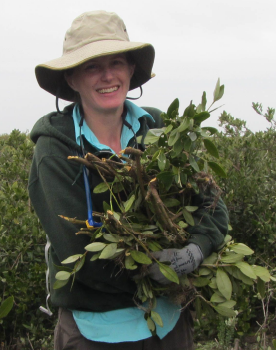
Anna Armitage
Professor
Marine Biology
GOOD NEIGHBORS WORK TOGETHER
Many of the finest coffees are shade grown. Like all plants, coffee plants need some light for photosynthesis, but they have adapted ways to thrive in the shadows of neighboring trees. In the shade, coffee plants share nutrients produced by their neighbors, and are able to grow larger leaves and heavier fruits. At the same time, shade-grown coffee needs less water and pesticides to control disease, yielding a more productive, sustainable, and environmentally-friendly crop. These cooperative relationships between coffee plants and their taller neighbors have gradually grown closer and more beneficial over time.
Facultative relationships among plant neighbors can be found closer to home as well. In our coastal wetlands, some types of plants can ease heat stress and reduce desiccation for their neighbors. These “nurse” plants boost survival and growth of many seedling species, increasing wetland diversity and productivity. But on the Texas coast, a new neighbor has begun to move in, a salt tolerant tropical shrub called a mangrove.
In the past, mangroves have been relatively rare on the Texas coast – the occasional winter freeze has kept them in check. But in recent decades, freeze events have become rarer, and mangroves have become more common, displacing marsh plants in many places along the coast. This change is happening fast, too fast for cooperative relationships to develop between marsh and mangrove plants.
What does this rapid change and lack of neighborly relationships mean for wetland plants and animals, and the surrounding wetland ecosystem? This question, and its implications for wetland ecosystem function, forms the core of my research program. In some ways, mangrove encroachment is a benefit – reducing coastal erosion and providing nesting and roosting habitat for coastal birds. In other ways, mangroves can be detrimental, providing less desirable food for herbivores and altering fishery habitat. The question remains: are mangroves good neighbors? I’ll need a few more cups of coffee to get to the bottom of that challenging question.
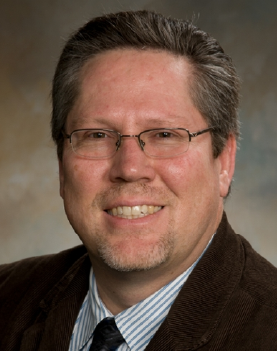
Christopher Marshall
Director
Gulf Center for Sea Turtle Research
Professor
Marine Biology
Texas A&M University at Galveston’s Gulf Center for Sea Turtle Research (GCSTR) is currently working to open a short-term sea turtle hospital on campus later this fall. Headed by Dr. Christopher Marshall, the GCSTR will take the lead for responding to stranded sea turtles on the Upper Texas Coast and utilize the hospital to provide rehabilitation services to stranded, ill or injured sea turtles.
Marshall has worked with sea turtle species and supported conservation efforts on the Upper Texas Coast for decades. As a keystone species, sea turtles play an important role in the marine ecosystem at large. They help to maintain healthy seagrass beds and coral reefs, provide crucial habitat for marine life and balance other marine animal populations like sponges and jellyfish. Of the seven species of sea turtles, six can be found in Texas, including the critically-endangered Kemp’s ridley. All sea turtle species are listed as endangered or threatened and are therefore federally protected.
Our Vision
Texas and the western Gulf of Mexico currently lacks the research, monitoring and conservation capacity that is being conducted in other regions of the Gulf of Mexico. The vision of the Gulf Center for Sea Turtle Research is to expand the current research capacity in the western Gulf of Mexico to match other regions of the Gulf of Mexico and to provide a focal point of expertise in the state and across the Gulf of Mexico.
Caribbean Hydroclimate & Coffee
CARIBBEAN HYDROCLIMATE & COFFEE
The limited land area available on Caribbean islands means that annual coffee production in the Caribbean will never rival Central America and Africa. However, available agricultural land, soil, and climate can support both the arabica (prefers high altitudes, with shade) and robusta beans (higher caffeine content, but harsher and bitter flavor), and their value to the fine coffee industry is growing.
The main islands supporting coffee production are Jamaica and Cuba, Hispaniola (Dominican Republic, Haiti), and Puerto Rico, and while only separated by a radius of ~310 miles, these islands span a sharp gradient in mean annual rainfall from 51 inches per year, 55 inches per year, to around 35 inches per year, respectively.
Moist and humid air rises in the equatorial regions of the tropical North Atlantic Ocean, and its moisture load drops as rain when airmasses make their journey to higher altitudes and latitudes. The air finally descends at subtropical latitudes in an area called the North Atlantic Subtropical High, and this dry air increases regional aridity. In response to anthropogenic CO2 loading of the atmosphere, the North Atlantic Subtropical High is forecast to expand westward and increase Caribbean aridity this century. For example, the United Nations has estimated that Caribbean losses related to climate change will be $11.2 billion by 2080, with drought alone causing $3.8 billion in losses.
Fragile economies on small island nations like Haiti are just learning to leverage their unique coffee industry, yet are now faced with potentially trying to mitigate these losses in the coming decades. To better understand the behavior of the North Atlantic Subtropical High in the past and future, my team at Texas A&M University at Galveston is investigating how rainfall has changed over thousands of years in the northern Caribbean using geological approaches.
While you may know how Caribbean coffee tastes today, changes in Caribbean rainfall in the coming decades may alter the taste of your favorite Caribbean flavors. Even more reason to take pause, and enjoy a sip of Caribbean coffee today that may taste different in just a few decades.
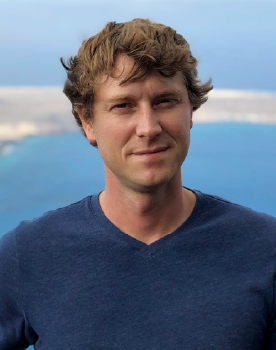
Pete van Hengstum
Associate Professor
Marine & Coastal Environmental Science
What Stimulates the Ocean & the Global Carbon Cycle
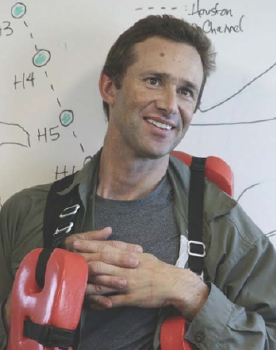
Karl Kaiser
Associate Professor
Marine & Coastal Environmental Science
Chancellor's EDGES Fellow
Presidential Impact Fellow
WHAT STIMULATES THE OCEAN & THE GLOBAL CARBON CYCLE
The psychoactive substance caffeine makes the world and science go round.
I remember being on an ice breaker in the Arctic Ocean for eight weeks with limited daylight, and the coffee maker broke down in week two. Believe me, during the few days it took to repair the coffee maker, collecting samples and performing sophisticated measurements was a challenge, and scientific discussions were much more heated than usual.
My work as a marine chemist depends on distinct signature molecules to decipher fundamental processes in the ocean. I love that everyone who drinks coffee unwillingly returns caffeine back to the environment, and so we can use it to track effluent flows in estuaries and coastal waters. A recent focus of my research has been to describe a new class of marine compounds, which we call carboxyl-rich alicyclic molecules (CRAM). Similar to caffeine, these compounds are cyclic, and as it turns out, play a dominant role for carbon sequestration and iron cycling in the ocean. We are still only beginning to learn about the importance of CRAM, but it is clear they help with the ocean’s CO2 hangover and keep the global carbon cycle caffeinated.
Cherie Coffman
Administrative Coordinator
Center for Texas Beaches & Shores
William Paul Ricker Award (2020)
Krista McBrien
Program Coordinator
Center for Academic Learning Support
Vice President Meritorious Staff Service Award (2020)
Amy Caton
Associate Director of the Center for Academic Learning Support
Instructional Assistant Professor
Jack K. Williams Library
40 Under 40 Galveston County's Young Professionals (2020)
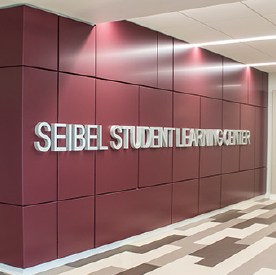
Outstanding Innovative Advising Technology Award (2020)
Texas Academic Advising Network
About Red Light Coffee Roasters
ABOUT RED LIGHT COFFEE ROASTERS
Operating as a small batch coffee roaster and shop, Red Light Coffee Roasters offers ethically sourced ingredients and works with businesses that support agricultural sustainability. As such, not only are its customers more likely to get a fresher and more flavorful cup of coffee, they can enjoy it with some relief knowing that it leaves a lower-impact environmental footprint than a different choice might pose.
Yet even as Red Light Coffee Roasters champions agricultural sustainability, it also points to thorny questions about Galveston’s complex cultural and spatial histories and their citation in the current moment. Constructed in 1862, its current building housed a bordello until the early 20th century and it is located in what was a red light district known locally as “the Line.” Its name, and the names of the coffee blends it serves, similarly reference its earlier incarnation.
Though we may be inclined to view these nods as celebrating a problematic history or as a cynical marketing ploy, consider an alternate perspective. Red Light’s engagement with the city’s histories and its sustainability practices offers an iteration of relational placemaking that brings together people, objects, ideas and experiences to mobilize a specific vision of place. This vision includes preserving significant historical and cultural qualities, utilizing strategies that prevent runaway gentrification, and building community consensus on specific courses of action; each is reflected in the city’s development plans for the West Market Street District where Red Light is located.
As we close out an unprecedented year, join us in celebrating these iterations of placemaking that seek to build community and connection. Informed by a spirit of renewal and possibilities enabled by recognizing and honoring our complex histories and diverse perspectives, we proudly support this local small business and offer you a delicious cup of cheer and warmth this holiday season.
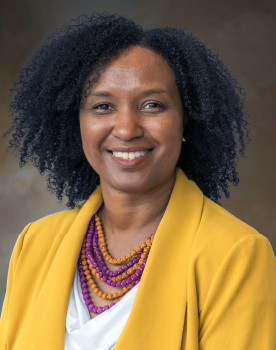
Carol Bunch Davis
Associate Professor
Liberal Studies
Assistant Vice President for Academic Affairs
ADVANCE Administrative Fellow
Chair
Civic Literacy, Inclusion, Diversity and Equity Committee
- Dr. Kathryn Falvo
- Dr. Randall Davis
- Dr. Cassia B. Galvao
- Captain Augusta D. Roth, DBA
- Dr. Samuel Brody
- Dr. Anna Armitage
- Dr. Christopher Marshall
- Dr. Peter J. van Hengstum
- Dr. Karl Kaiser
- Dr. Carol Bunch Davis
